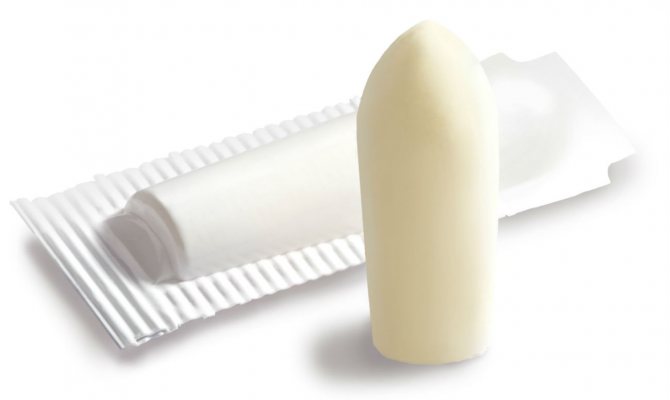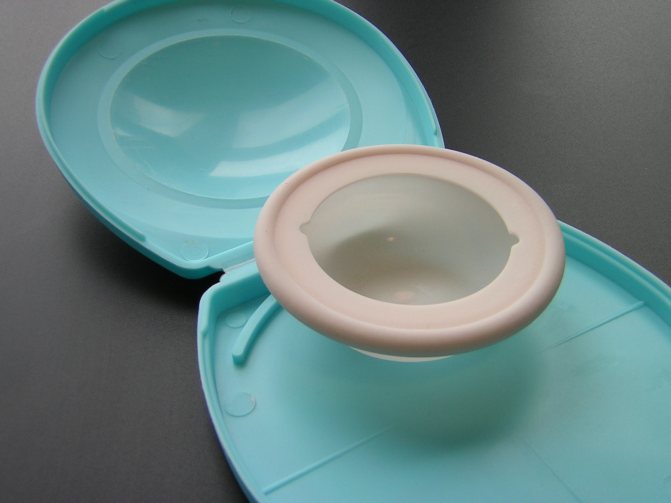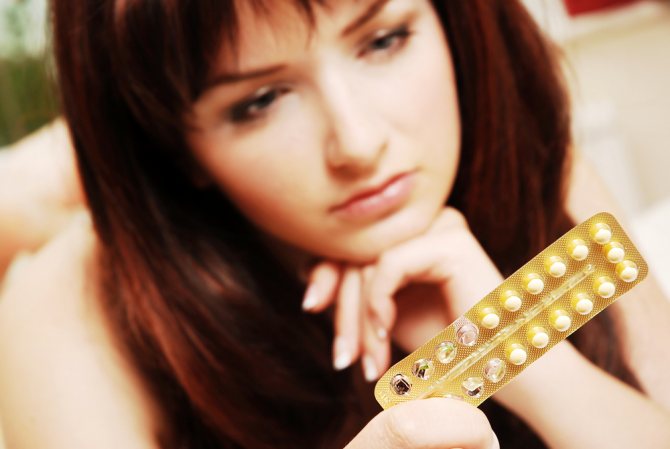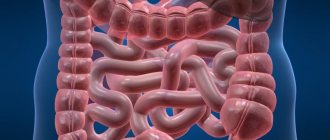There is a common belief among young mothers that in the first months after childbirth, while a woman is breastfeeding and menstruation has not yet returned, it is impossible to get pregnant. In general, moms are right. However, in order for pregnancy to definitely not occur, four conditions must be met .
- A woman should breastfeed her baby only without artificial supplementation.
- The baby should breastfeed every 3 hours during the day and once at night, and the interval between night feedings should not exceed 6 hours. The more often feedings occur, the more effective the method is.
- Menstruation has not yet appeared.
- No more than 6 months have passed since the birth.
If at least one of these conditions is not met, completely unexpectedly for herself, the woman may again find herself “in a position.” And there is little good here. A new pregnancy will prevent the baby from breastfeeding. Too short an interval between births can lead to a complicated pregnancy and the birth of a premature baby. According to doctors, the minimum interval between births is two years, and the optimal interval is from two and a half to three and a half years.
Sex and contraception after childbirth
Everyone knows that it is advisable to begin sexual activity after childbirth no earlier than 4-6 weeks. However, many married couples begin having sex almost immediately after the birth of the child. In this case, you need to be especially careful: after all, a new pregnancy may occur before the first menstruation appears.
Without waiting for trouble, start using protection immediately, from the very first sexual intercourse. When choosing contraceptives, it is necessary to take into account that the woman is now a nursing mother. Contraception should not affect the quality and quantity of breast milk.
Which method of contraception to choose
A new pregnancy after childbirth can occur even if the first menstruation has not yet begun. Therefore, you should worry about choosing a method of protection immediately after the end of the recovery period. Contraceptive measures directly depend on whether the young mother is breastfeeding or not. If the baby is bottle-fed, then the young mother has no other restrictions in choosing a method of protection against unwanted pregnancy, except those related to her health.
In nursing women, the healing process of internal organs occurs faster, since stimulation of the nipples produces the hormone oxytocin, which provokes uterine contractions, which, in turn, helps restore the muscles of the uterus.
Video: contraception tips for breastfeeding mothers
Intrauterine device
The most suitable method of protection against pregnancy is an intrauterine device (IUD). It works effectively (90% reliability) and does not affect milk production in any way. In case of uncomplicated childbirth and no contraindications, the IUD can be inserted as early as 6 weeks after birth.
Like others, this method has its drawbacks. The spiral cannot be installed in case of inflammatory diseases of the genital organs and in case of heavy and painful periods.
You won’t be able to install and remove the IUD yourself; entrust this difficult task to an experienced gynecologist.
Barrier methods of protection
Barrier means of contraception are those that mechanically impede the movement of sperm into the cervix, thereby preventing the onset of fertilization.
Condom
The most popular barrier method, the reliability of which according to the Pearl index is 2–18. A medical device in the form of an elastic thin-walled tube with one buried end is put on the erect penis, where the sperm is actually collected after ejaculation.
Using condoms of different colors and textures can help diversify the sex life of partners
Table: pros and cons of using a condom
| pros | Minuses |
|
|
Spermicides
A method of protection against unwanted pregnancy, based on the local use of chemicals that inhibit the activity of sperm and prevent them from entering the uterus. Pearl index - from 3 to 21. Spermicides are available in the form of tablets, suppositories, etc., which are placed in the vagina 15–20 minutes before sexual intercourse and are effective from 1 to 6 hours. Among the most popular means:
- foam or jelly (Delfinon, Patentex, Emko, Coromex);
- vaginal suppositories (Pharmatex, Erotex, Contratex, Patentex, Oval);
- vaginal tablets (Benatex, Gynecotex, Traceptin);
- creams (Pharmatex);
- foaming tablets (Pharmatex);
- foaming suppositories (Pharmatex, Erotex);
- soluble films (Pharmatex);
- vaginal tampons (Pharmatex);
- sponges (Pharmatex).

Spermicides in the form of suppositories are used more often than other types of contraceptives in this class
Table: advantages and disadvantages of using spermicides
| pros | Minuses |
|
|
Cap or diaphragm
A cap (Pearl index 9–20) is a special cylinder that is placed on the cervix, like a diaphragm (Pearl index 6–20), but the latter is larger. Both devices prevent sperm from entering the uterus and are inserted 20–30 minutes before sexual intercourse. The devices must be removed 6 (maximum 24) hours after sexual intercourse. After childbirth, the devices can be used no earlier than 1.5 months, when the genitals have restored their prenatal size.
This method of barrier contraception is not particularly popular, since it is inferior in convenience to condoms and spermicides.

If the size of the diaphragm is incorrectly selected, the likelihood of inflammatory processes in the genitals increases
Table: Advantages and disadvantages of using a diaphragm or cap
| pros | Minuses |
|
|
Barrier contraception
The use of a diaphragm or cap also does not interfere with lactation (milk production) and does not affect the child’s health. If you used a diaphragm and cap before giving birth, you should now check the size as you may need a larger one. It is advisable to wait until after the postpartum period (6 weeks after giving birth) before trying on a diaphragm. The selection and insertion of the diaphragm for the first time should be carried out by a doctor.
You can protect yourself with condoms. However, their use may be temporarily difficult because women produce less lubrication in the vagina during breastfeeding. This problem can be solved by spermicidal agents (Pharmatex, Contraceptin, Patentex Oval), which not only immobilize and kill sperm, but also act on most pathogens of sexually transmitted infections. The reliability of this method without using a condom is 80-95%, and with a condom - 99.9%.
Lactational amenorrhea method
Breastfeeding is a hormone-dependent area of the body’s functioning: during lactation, the mother secretes prolactin in large volumes, a hormone produced by the pituitary gland, which suppresses progesterone, the hormone responsible for the maturation of the egg and its release. As a result, under the influence of prolactin, systematic changes do not occur in the uterus, which causes the absence of critical days - amenorrhea.
At the same time, the Pearl index, that is, an indicator of the effectiveness of a contraceptive method, is 2–3 (the lower the index, the more reliable the contraceptive method; unprotected sexual intercourse is estimated at 80–85). But this indicator requires strict adherence to feeding rules:
- the baby receives only breastfeeding, without supplementary feeding or additional feeding, that is, without alternating breast milk and other products;
- a woman puts her baby to her breast six or more times a day;
- baby suckles at night.

The lactational amenorrhea method requires compliance with several conditions, including mandatory night feedings
At six months, the child begins to receive the first complementary foods, which means that his need for mother’s milk will decrease, which, in turn, will cause a decrease in prolactin levels, an increase in the amount of progesterone and a gradual restoration of the monthly cycle.
A decrease in prolactin can occur earlier than this period, since its content is affected by the young mother’s medication intake, as well as the general state of the immune system.
Table: advantages and disadvantages of contraception using the lactational amenorrhea method
| pros | Minuses |
|
|
Hormonal contraception
Most birth control pills (combined) contain two female sex hormones - estrogen and gestagen. However, it has long been known that estrogens reduce the amount of breast milk, shorten the duration of lactation and can affect the normal growth of the child. Therefore, combined hormonal pills are not suitable for a woman who wants to breastfeed her baby for as long as possible. In this case, mini-pills—tablets containing only gestagens—come to the rescue.
Unlike combination products, mini-pills have less contraceptive “potential” and require care - they must be taken strictly at the same time of day. You can start taking these pills six weeks after giving birth.
Hormonal injection (Depo-Provera) also does not interfere with lactation. The first injection of the drug must be given to breastfeeding women 6 weeks after birth, and to non-breastfeeding women - 4 weeks after birth. One injection of the drug provides reliable protection against the development of unwanted pregnancy for up to three months. However, restoration of the menstrual cycle after such an injection can take quite a long time.
How a contraceptive method is selected in a specific case
To decide which contraceptive method is best for you after giving birth, ask your gynecologist for the following information:
- What methods are available and what is their effectiveness?
- Which methods are suitable for your body and lifestyle, taking into account your health status?
- When can you start using contraception?
- How can you and your partner share responsibility for contraception?
- Possible side effects.
If you are breastfeeding, any contraception that contains estrogen (such as the vaginal ring and combination pills) is not recommended as it may decrease your breast milk supply.
The following contraceptive methods require mandatory medical consultation to assess their safety and suitability for each woman:
- implants and IUDs;
- permanent sterilization;
- hormonal methods of contraception.
When using barrier methods of contraception, it is recommended that you carefully study the instructions for their correct use to maximize their effectiveness. Before using any contraception, you should make sure that you are not already pregnant.
Other methods of postpartum contraception
It is also possible to use other methods of contraception after childbirth. A relatively high level of effectiveness (about 99%) is provided by intrauterine contraceptives . If there are no contraindications, and the woman had no complications during childbirth, then intrauterine contraceptives can be used almost immediately after childbirth. The most optimal time for the process of introducing such a contraceptive is the middle of the second month after the birth of the baby. This timing will significantly reduce the risk of a possible IUD falling out.
Intrauterine contraceptives do not have a negative effect on the quality of human milk or on the process of its production. They can be used for a long period of time - about five years. This product protects against unwanted pregnancy immediately after its correct installation.
The disadvantages of this method of contraception include the possibility of expulsion (that is, “falling out”) of the contraceptive immediately after its administration. In addition, after insertion of an IUD, some women may experience significantly increased blood loss during menstruation, and may also experience pain during these days. In addition, when using this method of contraception, complete protection against the development of ectopic pregnancy . This method of contraception should not be used by a woman who has several sexual partners.
a condom as contraception after childbirth . Provided that the instructions for using this product are followed, as well as the agreement of both partners, the effectiveness of using a condom can be 100%. A condom, moreover, can be used at the first postpartum sexual intercourse.
This method of contraception is the most accessible, and it does not affect the health of the baby and mother at all. In addition, protection from sexually transmitted diseases using a condom should be noted as positive aspects.
However, many women note as disadvantages the connection between using a condom and sexual intercourse, changes in sensations during sexual intercourse, and the need to carefully follow all instructions regarding its use.
The use of a diaphragm as postpartum contraception is approximately 80–90% effective. If you use this method in combination with spermicides , then its effectiveness can be slightly increased. It is important to note that the diaphragm is only used after six weeks have passed after the baby is born. It does not affect the health of the woman and child at all. But it is very important that the selection of a diaphragm is carried out individually by a gynecologist. In addition, after each sexual intercourse it is necessary to take care of the diaphragm.
The use of spermicides, which are approximately 95% effective if used correctly, is possible already during the first sexual intercourse after childbirth.
Spermicides do not have a negative impact on the health of the woman and child, and to some extent provide protection against sexually transmitted diseases.
The noticeable disadvantages of this method include its relative high cost, clear connection with sexual intercourse, as well as changes in the quality of sensations during oral sexual intercourse.
Features of postpartum contraception
However, doctors confirm that there is a fairly low probability of an egg being fertilized during the first six months after birth. Breastfeeding is a natural, natural process in which there are visible benefits not only for the baby, but also for the mother, since the processes of reverse development in the body of a nursing mother occur more dynamically. And contraception after childbirth involves the selection of a method of protection against unwanted conception that will not have a negative impact on the process of producing breast milk, its quality, and will not adversely affect the health of the mother and baby.
A method called lactational amenorrhea , if used correctly, works, according to statistics, in 98% of cases. However, compliance with all conditions must be as thorough as possible. This method of contraception after childbirth is permissible only if the woman feeds the baby at his request, and feeding also takes place at night. It is important that the baby is fed exclusively with breast milk, that is, supplementary feeding is not used. The baby should breastfeed once every three hours during the day, and no more than six hours should pass between night feedings. Thus, the more often feedings on demand occur, the higher the level of effectiveness of this method of contraception. The fact is that the effect of the hormone prolactin, which causes lactation, has a depressing effect on sex hormones . Consequently, conception does not occur.
When using the lactational amenorrhea method, it is important to note that it is effective only before the onset of the first menstruation and no more than six months after childbirth. Immediately after a woman introduces supplementary feeding into the baby’s diet or increases the intervals between feedings, the effectiveness of the method sharply decreases.
In practice, there are many special points that need to be taken into account. So, for example, sometimes after 8-12 weeks of the normal process of feeding a child, a woman experiences a so-called lactation crisis . As a result, an unplanned pregnancy occurs. At the same time, women who do not breastfeed their baby can become pregnant again after just six to eight weeks.
Other methods of postpartum contraception
Contraception after childbirth using a natural family planning method directly depends on how regular a woman's menstrual cycle is and whether she follows all the instructions exactly as she should. And even then, the effectiveness of the method is only 50%. In this case, periodic abstinence from sexual intercourse is required. It is also important to take into account that this method can not be used immediately after the birth of the baby, but only after the complete restoration of the menstrual cycle. In a woman who does not breastfeed her baby, the restoration of her monthly cycle occurs already in the sixth to eighth week after the birth of the child.
It is also important to take into account the fact that ovulation occurs earlier than menstruation. Therefore, a woman may already be pregnant, but she attributes the absence of postpartum menstruation to the postpartum period.
There is also a method of female and male sterilization , which is a method of irreversible contraception . In this case, an operation is performed to ligate the tubes or to apply clamps to the fallopian tubes in women, and in men the vas deferens are ligated. But such a serious step should be taken only by those people who are completely sure that they do not want to have children in the near or more distant future.
Ideally, before starting sexual activity after the birth of a baby, a woman should visit a gynecologist and jointly determine the most suitable method of contraception for her after childbirth.
Pregnancy after taking contraceptives

When planning a pregnancy after taking contraceptives, many women feel anxious about regaining their ability to conceive. What contraceptives will allow you to become a mother faster after stopping their use?
pregnancy planning, contraception
When planning a pregnancy after taking birth control, many women feel anxious about regaining their ability to conceive. Almost 90% of women become pregnant within 1 year of stopping birth control pills. The time it takes to restore fertility depends on a number of factors:
- type of contraceptives;
- duration of contraceptive use;
- woman's age;
- her general health.
If reproductive function is not impaired, pregnancy most often occurs 2-3 months after stopping contraception. But if after six months two lines do not appear on a pregnancy test, you need to contact a gynecologist.
In gynecology, the “rebound effect” is known, when after stopping oral contraceptives in the first 3 cycles, the probability of pregnancy is higher than before it started. This method is sometimes used to treat women trying to become mothers. 3 months before conception they are prescribed oral contraceptives.











